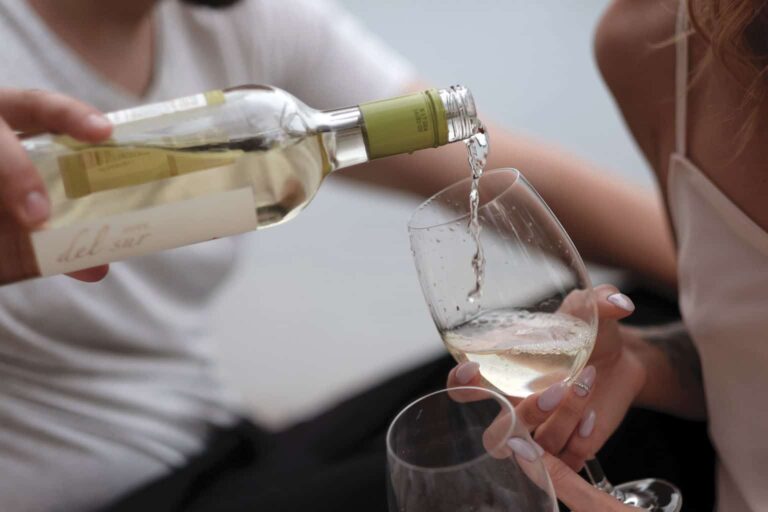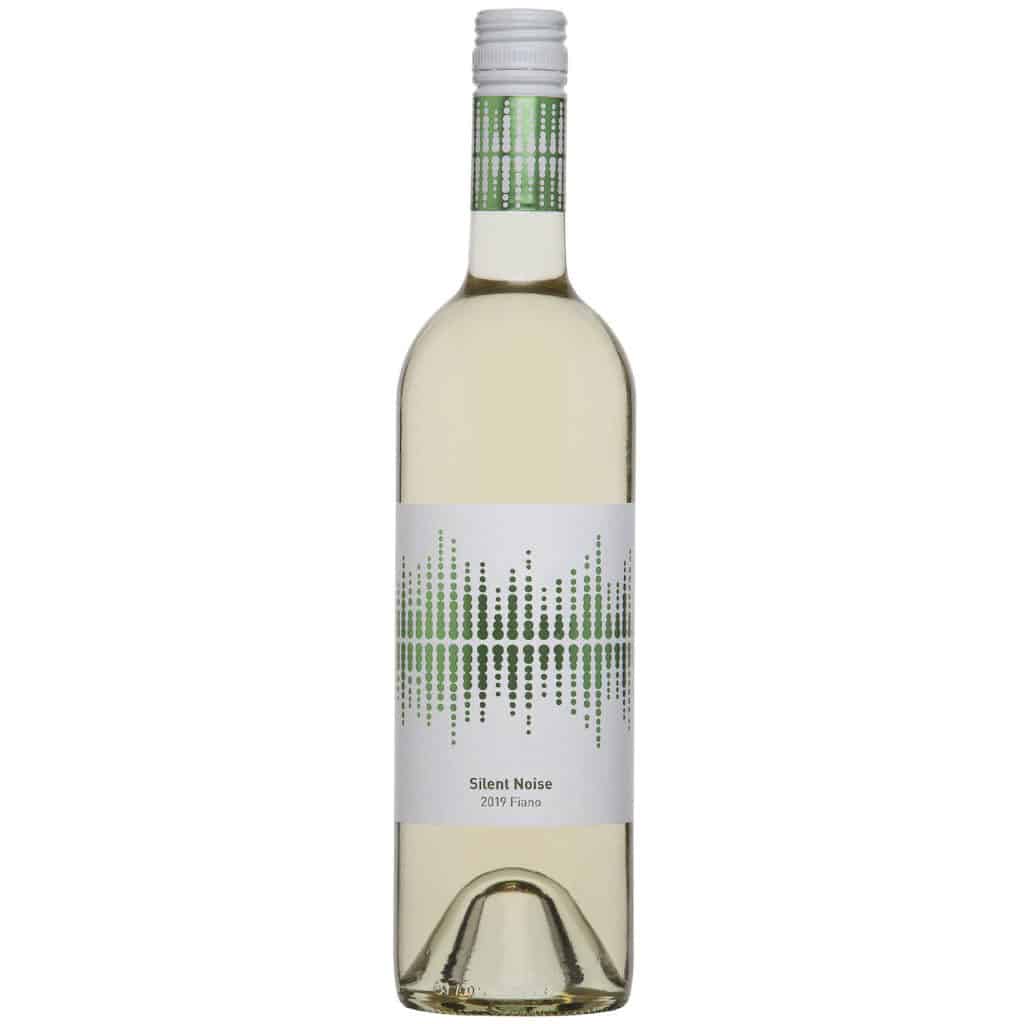WINE
Fiano, Fiano!

WORDS: Peter Panousis – Peter Pan Wine PHOTOGRAPHY Supplied
This Italian white wine serves both our climate and lifestyle well and can be enjoyed with or without food.
SPRING has sprung, which lets us make way for some lighter wine drinking. The wine of choice for Yours Truly this Spring will be Fiano.
What is Fiano?
Fiano is a medium-sized white grape with thick skin that forms small to medium-sized clusters that are drought resistant but prone to powdery mildew in wet summers.
Bunches are usually low yielding but interestingly, the berries have sugary pulp with a slight bitterness. As a wine, Fiano produces a pale yellow colour, usually dry to the taste, with medium acidity and low tannins supported by notes of flowers, honey, spices and nuts. Fiano is usually made into a dry wine, however, there are many fine sweet examples too that are usually luscious and textured, with developed dried-fruit flavours like fig and prune.
Specifically, Fiano from cooler climates can be vibrant and racey, showing citrus, pear and developing to honey and hazelnut notes. Alternatively, wine made in warmer climates develops tropical fruit and stone-fruit aromas such as apricot, with exotic notes of spice and a rich textural element like a Chardonnay but with good prevailing acidity.
In short, Fiano cannot only be likened to Chardonnay but to Pinot Grigio, Viognier and Semillon. Ultimately, style will usually be determined by the winemaker’s preferences. If the grapes are picked early, a lighter, fresher style will ensue. Conversely, if the grapes are picked later, expect a richer textural style. Oak treatment will also influence style and taste.
Fiano is classified as an aromatic white to be enjoyed young but will age well too. World-renowned wine writer and scholar Jancis Robinson says: “Fiano can produce an age-worthy wine that has the potential to develop in the bottle for several years after the vintage date. In its youth, Fiano is often intensely flavoured and aromatic, with honey notes that over time develop more spicy and nutty notes.”
What are the origins of Fiano?
Fiano is said to be an ancient grape hailing back to ancient Roman times but with its more likely origin is Greece. In a 2019 post, the Drink Italian website stated: “Fiano was considered imported by the Greeks.”
Even today, swarms of bees are drawn to the sugary pulp of Fiano grapes in the Avellinese vineyards of the Campania region. Specifically, Campania is located on the shin side of Italy and has more than 46,000 hectares of planted vines, with Fiano one of the top three grapes grown in the region. The climate is hot in summer and mild in winter, providing desirable long-growing conditions, while the soil is rich and volcanic. Sicily shares similar terroir to Campania and provides ideal conditions for growing Fiano. The grape thrives in its hot, dry climate and is able to handle heat spikes and drought. Open the gate for other countries with similar climates.
Fiano became a DOC-rated wine (like an appellation of France – where strict rules are applied to making wine) in the late 1970s but in the 1990s, it went through its own renaissance, becoming a DOCG wine. In 2003, the Fiano di Avellino DOCG was established to officially recognise top-quality wines. The DOCG category is a mark of a quality wine – the highest level of quality for Italy and not unlike the Cru class AOC category of France. DOCG wines must come from a clearly defined geographical area, which can range from a single vineyard to one or more wine-growing communities or even an entire region. They must comply with strict quality standards with regard to the authorised grape varieties, cultivation, yield harvesting and ageing.
Where does Fiano grow best around the world?
Clearly, the Fiano grape grows best in Campania and Sicily, Italy. Its long history in these two regions ensures the grape is grown and made into desirable and profitable nectar. Tradition has served this grape well.
Interestingly, the grape has also managed to make its way outside of Italy. On a much smaller scale, the Argentinian region of La Rioja, north of Mendoza, is also home to Fiano. Small plantings of Fiano are also found in the warmer parts of California. The other part of the world where Fiano grows best is in Australia, where it’s especially popular as it suits our warmer climate and is ideal for our drier growing conditions.
There are now more than 104 Australian producers of Fiano. Coriole Vineyards in McLaren Vale were the first to plant Fiano in 2005 and the grape performs well in the rich terra Rossa soils of the estate. Both McLaren and the Riverlands produce some of the best examples of Fiano in the country. The recent uptick in the number of farmers growing the grape means more investment in the wines it produces. Consequently, Fiano can now be found in Queensland’s Granite Belt. In NSW, Fiano is grown in the cool, elevated climate of Orange, and the warmer regions of Shoalhaven, Mudgee, Hunter Valley, Hilltops and Riverina. In Victoria, you will find Fiano grown in the King Valley, Alpine Valley, Heathcote, Bendigo, Geelong, Rutherglen, Glenrowan, Nagambie Lakes, Beechworth, Macedon Ranges, Mornington Peninsula, Geelong and Yarra Valley. In Western Australia, Fiano is grown in Margaret River, Geographe, the Great Southern, Peel, Swan Valley and Perth Hills; and in South Australia, it grows well in McLaren Vale, Clare Valley, Adelaide Hills, Barossa Valley and Langhorne Creek. In the ACT, you’ll find Fiano grown in Tumbarumba and Canberra districts. It would appear Tasmania is not growing commercial plantings of Fiano, but I suspect this will change as the climate starts to warm.
Why Fiano?
Fiano is a grape of interest primarily due to its scarcity, however, it is relatively cheap compared to other varieties like Chardonnay and both the Italian and Australian examples are first class. Stylistically, one can find Fianos made either light and fresh or rich, textural and nutty, thus suiting all palates and ages. A good Fiano can mature or cellar particularly well, suiting the most discerning palates. Alternatively, it can be playful and ready to drink. Fiano is simply right for Australia, including our climate, lifestyle and food.
Fianos are also affordable and value for money compared to premium Burgundy. Remember a DOCG Fiano is top-class and highly rated and can be found here in Australia for less than $40 a bottle retail. Likewise, many good Australian examples can be found for around $20 to $25 retail – a bargain considering the quality of the wines.
Fiano has good acid structure and texture which makes it versatile for drinking with or without food. However, Fiano is incredibly food friendly due to its array of flavours, texture, nutty notes and spice. Think Fiano and Asian food or seafood dishes. Specifically, try it with sashimi or sushi or with Vietnamese or Thai dishes with coriander, mint and basil – simply sublime. Fiano will also handle creamy sauces and flavoursome, mild Indian curries and pulses. Fiano will also pair well with Italian dishes including lighter-style pizzas, eggplant dishes, risotto, roast chicken or pork. Fiano is also good with soft, creamy cheese or Burrata. Try it with a Caprese salad – so good!
What to consider …
From South Australia, try the Il Cattivo Fiano. Wine writer Tony Love describes Il Cattivo as a new winery venture by property developer Anthony Catinari, whose 2017-planted estate vineyard overlooks Fisherman’s Bay, at the seaside tourist township of Port Elliot, on the south coast of the Fleurieu Peninsula. Anthony is both the viticulturist and winemaker for Il Cattivo. The winery is rated 3.5 stars by James Halliday and is only a one-hectare vineyard under vine with Fiano and Montepulciano as the main varieties. The winery is relatively small, producing around 1500 dozen. I really like their Fiano – it’s bright, with lots of florals and citrus and pine nuts with good acidity and texture. The wine is made with a wild yeast ferment in both stainless steel tank and barrel. This Fiano underwent some malolactic fermentation (a process where grape acid is converted to milk acid, thus making the wine a little more soft and creamy in taste). Lees stirring has also been applied – a process where the yeast solids in the wine are stirred regularly to help make the wine a little softer and creamier to the taste.
From one of Barossa’s small producers, try Paisley Fiano. Derek Fitzgerald, the owner, is a former long-time winemaker for Thorn-Clarke and was instrumental in winning many awards for them during his tenure. Derek has been making wine for more than 20 years but established Paisley in 1997. The property is relatively small (around five hectares under vine) and produces about 1500 cases per year. Paisley is currently four-star rated by James Halliday and Derek has access to some good growers around Barossa and Adelaide hills for the Fiano. The 2021 Fiano received 98 points from Winestate Magazine and 92 points from Mike Bennie, who says: “This Fiano gives us some ‘quintessential’ characters of nashi pear, cashew, ginger and light green herbs in bouquet and palate. It’s juicy, a little crisp, a touch oily in texture and follows through on a promise of interest and freshness.” A delightful drink!
And finally, from one of Australia’s youngest winemakers comes Charlie O’Brien’s Silent Noise Fiano. Although Charlie is young, he has already accomplished so much in winemaking including four trophies at the McLaren Vale Wine Show for his MF 2021 Grenache. His Fiano has: “Notes of tropical fruits (that) rise up to greet you from the glass. Think pineapple, guava, gold kiwi fruit, strawberries and passionfruit. There is lovely palate weight and creamy texture that provides a structurally complex character for these exotic, vibrant fresh tropical flavours.” I found this wine to be lighter and more crisp and minerally than the Paisley. Two different styles to suit two different occasions and meal matches.
Enjoy and happy but safe drinking.
Raised on the Gold Coast, Peter Panousis is a Fine Wine Consultant who has operated many restaurants and cafes. Formally educated with a Degree in Hospitality, Peter is WSET trained and has undertaken extensive wine education. He is also a Member of ASVO (The Australian Society of Viticulture and Oenology), and an Associate Fellow with AIM (Australian Institute of Management). See more from Peter @peterpanwine on Facebook, Twitter and Instagram.










